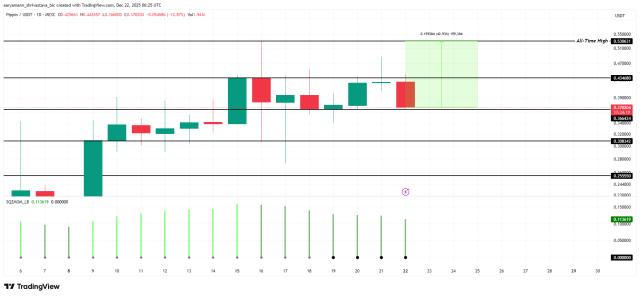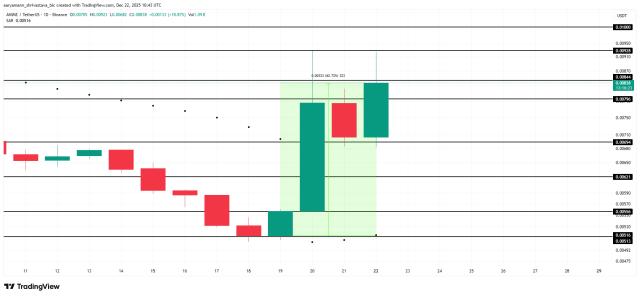The crypto market experienced a broad-based crash again on March 4th. BTC plummeted from a high of $95,000 to below $83,000, a 24-hour drop of 10.49%. The Altcoin market was also in a bloodbath, with ETH falling below $2,100, a 24-hour drop of 16.83%, reaching a new recent low. After a brief bullish run, the market experienced a severe sell-off, with both bulls and bears suffering heavy losses.

"Multi-Coin Reserve" Tests the Seriousness of BTC's Strategic Reserves
The previous day, against the backdrop of a generally depressed market, Trump issued a major statement, announcing that he would include cryptocurrencies such as BTC, ETH, XRP, SOL, and ADA in the US strategic reserves and promised to promote regulatory easing. As soon as the news broke, the price of Bitcoin surged from $85,000 to $95,000 in just 3 hours, and Altcoins also entered a full-blown rally mode.
However, after the excitement, doubts arose. The bearish representative Arthur Hayes directly stated that Trump was just talking, and the government had no money to buy the coins. More widespread criticism focused on the "multi-coin reserve" concept, questioning the absurdity of including highly centralized projects like ADA and XRP as reserve assets, which would only undermine the seriousness of BTC's strategic reserve and further reduce the possibility of the BTC reserve bill being passed at the federal level.
Some analysts also believe that Trump is playing the "high open, low close" routine: first throwing out the radical "multi-coin reserve" concept, and then retreating to the "single BTC reserve" as a compromise solution to gain Congressional support.
Regardless of the truth, it has exposed the growing divisions in the current market. The gap between expectations for Trump's policies and the reality has led investors to remain pessimistic about the industry, causing Bitcoin to surge and then fall back, followed by fluctuations.
Tariff Stick Breaks Illusions Beyond Expectations
The Trump administration's recent tariff policies targeting Canada and Mexico have been a focus of market attention. Just last week, Trump was vague and contradictory about the timing of the tariffs, and the outside world believed it was a negotiation tactic, with a last-minute deal eventually being reached, but this hope has now been dashed.
On Monday, Trump announced that tariffs would be imposed on Mexico and Canada starting March 4, and explicitly stated that there would be "no room for negotiation." Furthermore, he will raise tariffs on Chinese goods to 20% and implement "reciprocal tariffs" on the EU, Japan, and South Korea from April 2, a tough stance that exceeded market expectations. Canada and China both announced a series of countermeasures on the same day, and Mexico also hinted at taking countermeasures, fully igniting the tariff war.
The three countries of Canada, Mexico, and China account for 40% of the US's total imports and exports. The imposition of tariffs will drive up the prices of imported goods, undoubtedly exacerbating inflationary pressures in the US. Even the usually cautious Warren Buffett has spoken out, warning that tariffs are "a kind of warfare" to some extent, which could drive up inflation and harm consumer interests. Meanwhile, signs of slowing US economic growth are becoming increasingly evident, with the Atlanta Fed's GDPNow model showing that US GDP will contract by 2.8% in the first quarter, compared to a previous estimate of a 1.5% contraction. Market concerns about the US falling into "stagflation" are rising, which is putting pressure on assets that rely on liquidity and risk appetite.
In the immediate impact, on Monday, the three major US stock indexes collectively fell, with the Dow Jones Industrial Average dropping 1.48%, the S&P 500 index falling 1.76%, the largest intraday decline so far this year, and the Nasdaq falling 2.64%, erasing the gains since the November election. Tech stocks led the decline, with Nvidia plunging 8.69%, the lowest close since September 2024. Since the approval of the spot Bitcoin ETF, the crypto market has become strongly correlated with the traditional market, and the turmoil in the traditional market has quickly transmitted to and amplified in the crypto market, leading to another sharp crypto crash. If the US stock market continues to weaken, the crypto market may face even greater adjustment pressure.
Any Positive News Could Become a Catalyst for Both Bulls and Bears
Amid the depressed market sentiment, investors are pinning their hopes on the first White House Crypto Summit to be held on March 7, where Trump will convene industry leaders to discuss regulatory policies, stablecoin regulation, and the potential role of Bitcoin in the US financial system, which may set the tone for crypto regulation over the next four years. The market is eager for more substantive outcomes from the meeting to boost market confidence and drive price increases.
However, against the backdrop of adverse macroeconomic conditions, continued institutional capital outflows, and the exhaustion of retail buying momentum, the market's reaction to news has become increasingly extreme. The crypto summit may bring new policy sparks, but investors need to be wary that any positive news could become a catalyst for both bulls and bears.

For ordinary investors, maintaining financial flexibility and sufficient liquidity may be of greater long-term strategic value than blindly chasing rebounds. 4E, as the global partner of the Argentine national team and the only recommended trading platform, offers a USDT wealth management product with an annualized yield of up to 8%, allowing you to flexibly combine demand and time deposits, keeping your funds active while waiting for market changes.







